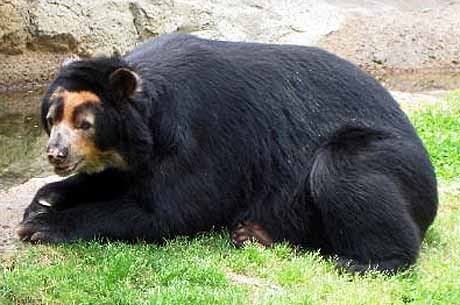 |
| Slightly oversized Arctotherium reconstruction. Image credit Carnivora Forums. |
I unfortunately cannot find where, exactly, the animal got the name 'Milne'. As you can see above, I have put "Heuvelmans, 1986" down as a reference, which is what is said online. However, Heuvelmans published no book in that year, and the Milne isn't mentioned at all in On the Track. I have yet to find a copy of From Flying Toads To Snakes With Wings, Shuker's 1997 book, although an online description does indicate that one chapter is dedicated to cryptid bears worldwide.
Nevertheless, the veracity of the story itself is for a future post. This one is dedicated to identifying the animal, even if it may not exist.
The only bear known to live in South America is the spectacled bear. Although the largest (known) carnivore on the continent, the jaguar is the largest obligate carnivore, and the Brazilian tapir is the largest overall animal proven to live in South America.
 |
| A spectacled bear. Image credit factzoo.com |
However, the family which the spectacled bear belongs to, Tremarctoide (the short-faced bears), also contains a number of giant prehistoric relatives: the North America Arctodus and South American Arctotherium. Either of these two is believed to possibly be the largest terrestrial mammalian predator known, tied with Andrewsarchus, a mesonychid.
Arctotherium is believed to have looked more a like a giant spectacled bear than Arctodus, and its environment fits the modern South American environment: Arctodus lived in the Alaskan tundra, whilst Arctotherium lived in the jungle. Both of these short-faced bears are known to have lasted into the Early Holocene, coexisting with and presumably being wiped out by early human settlers.
As a note, the North American short-faced bear also has a place in cryptozoology.
But why would a bear as big as Arctotherium feed on insects? Perhaps the Milne was merely an outsized individual spectacled bear - or perhaps Clark's imagination got the better of him, and he mistook a regular sized bear for a giant.
Just as a note, this identification is based solely on Clark's report. Flying Toads to Snakes with Wings presumably covers more sightings. However, even if this is the case, the identification does not change: the Milne has to be either a misidentified spectacled bear, or some form of prehistoric short-faced bear.
Read more about the Milne.

No comments:
Post a Comment